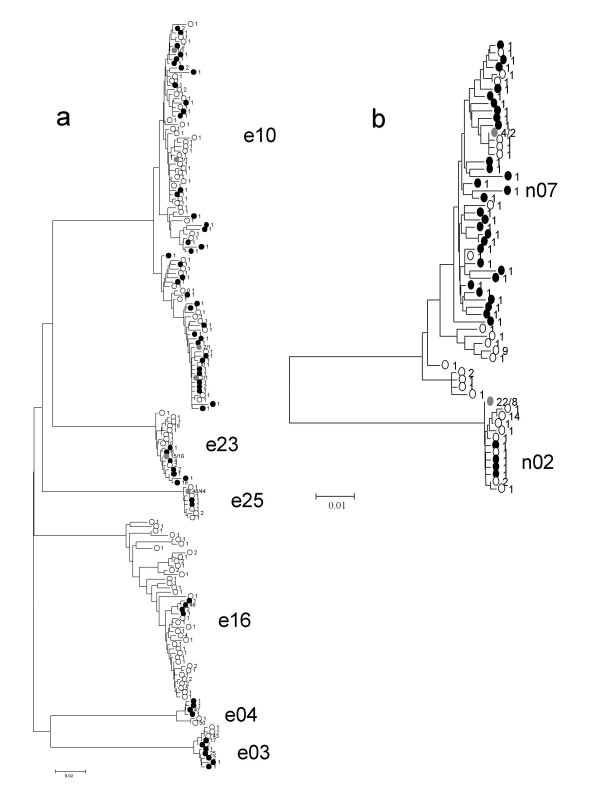Figure 1.
Phylogenetic trees obtained by the neighbour-joining method for the different haplotypes of a) E1E2 region, patients E03, E04, E10, E16, E23 and E25; b) NS5A region, patients N02 and N07. Black dots represent haplotypes obtained with the set of primers 1; white dots represent haplotypes obtained with the set of primers 2, and grey dots are shared haplotypes obtained with both sets of primers. The number next to the dot indicates the number of times this haplotype was detected by a particular primer set. For shared haplotypes two numbers are given, the first one corresponds to primer set 1 and the second to primer set 2. The scale bar represents number of nucleotide substitutions per site (0.02 and 0.01, respectively).

